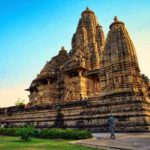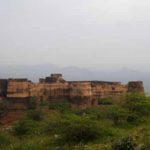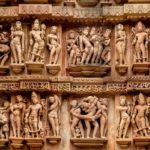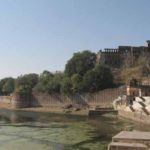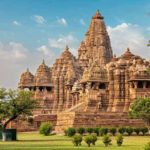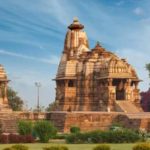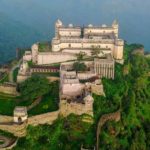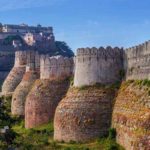Kalinjar Fort Situated on top of a hill, this fort contains a treasure house of many monuments and idols. These things reveal various aspects of history. This fort built by the Chandelas is an example of the grand architecture of the reign of the Chandela dynasty. There are many buildings and temples inside this fort khajuraho. This huge fort has grand palaces and canopies, which are finely designed and carved. The fort is believed to be the abode of the Hindu god Shiva. The fort also having a unique temple of Neelkanth Mahadev.
Kalinjar fort of Banda district has been a witness of the many ups and downs of history in every era. The names of this fort must have changed. It has gained fame as Kirtinagar in Satyuga, Madhyagarh in Tretayuga, Sinhalgarh in Dwapar Yuga and Kalinjar in Kali Yuga. The invincible fort of Kalinjar was under the Jejakbhukti kingdom in ancient times. When the Chandel rulers came, Mahmud Ghaznavi, Qutubuddin Aibak and Humayun attacked it and wanted to win it, but could not succeed. Finally, in 1569 AD, Akbar won this fort and gifted it to Birbal.
After Birbal, this fort became under the Bundel king Chhatrasal. After them, the fort was occupied by Hardev Shah of Panna. In 1812, this fort became under the British. One of the main attractions of Kalinjar is the Neelkanth Temple. It was built by Chandela ruler Paramaditya Dev. The Shiva lingam is of blue stone in addition to the giant 18-arm statue in the temple. Statues of Lord Shiva, Kaal Bhairav, Ganesh and Hanuman are carved on the stones on the way to the temple. Historians Radhakrishna Bundeli and Beedi Gupta tell that here Shiva drank the poison that came out after churning the sea. The specialty of Shivalinga is that water keeps leaking from it.
Apart from this, Sita SEZ, Patal Ganga, Pandava Kund, Budha-Buddi Tal, Bhagwan SEZ, Bhairav Kund, Mrigadhar, Kotithirtha, Chaube Mahal, Jujhotia Basti, Shahi Masjid, Murti Museum, Wauchope Tomb, Ramkatora Tal, Bharachar, Mazar Tal, Rathore Mahal, Ranivas, Tha. Matola Singh Museum, Belatal, Sagra Dam, Sher Shah Suri’s Tomb and Humayun’s cantonment etc.
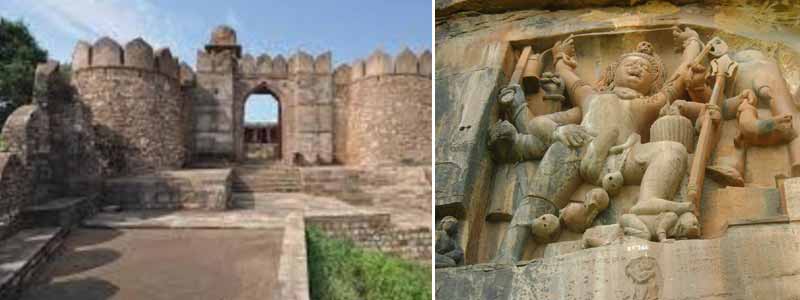
History of Kalinjar Fort
The Khalinjar Fort was under the control of the Chandellas starting from the 9th century till the 15th century. It was also very important till the time of the Mughals which is why the fort was under the attack of Mohammad Ghaznavi in 1019 and 1022 and that of Qutb-ud-din-Aibak who defeated Parmadideva who was the last Chandela in 1203. Though the fort was attacked by Humayun, it was Akbar who finally took over in 1569. Birbal who was one of Akbar’s nine jewels was gifted this fort by him. After Akbar, Kalinjar passed on to Chhatrasal who was a Bundela leader, then to Hardev Shah of Panna and finally to the British in 1812.
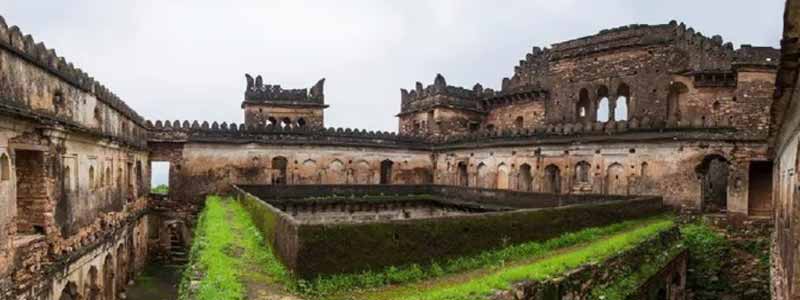
Architecture Of Kalinjar Fort
The Kalinjar Fort is situated on the top of a flat-topped hill in the Vindhya Range at the height of 244 meters above the ground. The fort points towards the east-west direction and is a mile in length and half a mile in breadth. Massive sandstone along with granite pieces have been used in the construction using lime mortar as the material for the cement Khajuraho Tour Packages.
Panna Dwar, Kamta Dwar, and Rewa Dwar are three of the four gateways which covered the town of Kalinjar. The entrance of the magnificent fort is present on the foot of the hill and on the right of the path lies the Rathore Mahal which was built in 1583 by Akbar. The steep, as well as stony road leading to the fortress, has seven gates namely Lal Darwaza, Hanuman Darwaza, Budha Bhadra Darwaza, Chauburji Darwaza, Alamgir Darwaz, Ganesh Darwaza and Bara Darwaza.
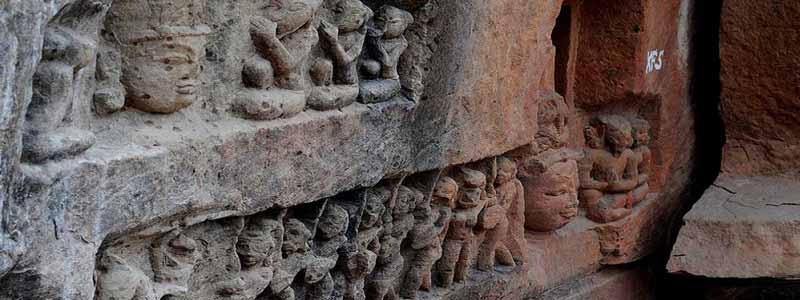
Best Time To Visit Kalinjar Fort
The ideal time to visit the Kalinjar Fort is from December to February since the weather is neither too cold not too warm during this time thereby making the climate pleasant and enjoyable.
How To Reach
Located between Chitrakoot and khajuraho attractions, Kalinjar Fort can be reached from both the cities by hiring a taxi. Alternatively, you can also get on the buses on the Chitrakoot-Khajuraho route and ask to be dropped near/at the fort.
By Air – The nearest airport is at Khajuraho, which is 130 km away.
By Rail – The nearest railway station is Atarra 36 km away, on the Banda-Satna route, 57 km from the Banda railway station.
By Road – The Kalinjar fort is linked by road to all the important centres in the region with regular bus services. Some of the major road distances are – Chitrakoot-78 km, Banda-62 km, Khajuraho-130 km, and Allahabad-205 km.

